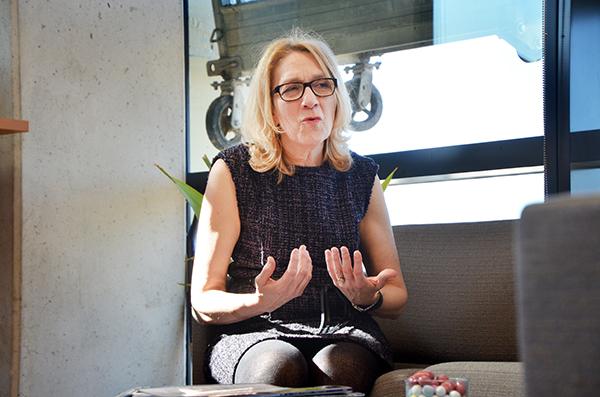The cash that will pour into GW’s public health research as part of the $80 million gift collected last month comes at an opportune time for professors trying to win grants from cost-conscious federal agencies.
Though the Milken Institute School of Public Health has become one of GW’s most research-productive colleges, grant revenue shrunk by about 5 percent last year. Meanwhile, the budget for the federal National Institutes of Health hasn’t kept up with inflation throughout the decade – slowing research funding nationwide.
The $30 million obesity research center that will start next fall will give faculty the financial foundation to explore new research topics, Dean Lynn Goldman said in an interview.
The money that will stream into research from the donation “can allow you to start things up that then can go on to achieve some support from the NIH or other agencies that, at the very beginning, you might say, ‘That looks a little risky, that’s too audacious, we don’t really want to go there,’” Goldman said.
Most of the money for the research center came from billionaire philanthropist Sumner Redstone, who combined his gift with former Wall Street financier Michael Milken for the University’s largest-ever donation last month.
While research revenue has grown by three-quarters in the public health school over the last five years – pulling in large amounts of money to study health policy and diseases – Redstone’s portion of the gift aims to make GW a powerhouse in obesity research.
Typically, government agencies like the National Science Foundation and the NIH fund the majority of GW’s research, but researchers will have more freedom to start new projects that might not yet have enough data to convince federal agencies, Goldman said.
“In doing that, we’ll identify research gaps that are really important and can lead to the identification of questions that would be great questions to address through research grants. Sometimes there can be a single question,” she said.

Rajiv Rimal, chair of the department of prevention and community health, said the research center could help attract private donors whose research interests line up with those topics.
“They also care about quality, for sure, but they also care about whether areas of research that we are proposing align with foundations priorities. So there are some foundations that care deeply about: obesity, or nutrition or partner violence,” he said.
As federal funding for research wanes, the University has tried to increase its funding from corporations and foundations, though it has seen little improvement in the last few years.
Vice President for Research Leo Chalupa said receiving one major donation for research from a donor can start a ripple effect at the institution. The funding could be extra helpful for faculty who are just starting out and applying for their first grants, he added.
“A tipping point comes when you’re a faculty member and you’re starting out,” he said. “At some point, suddenly you get your breakthrough. It’s like trying to break into television.”
Newly hired director William Dietz, a former nutrition specialist for the Centers for Disease Control and Prevention, will spend the next six months charting a course for the obesity center while getting to know faculty. The school will receive the funding in phases over the next several years and has formed a steering committee to plan how it will be spent over the next several months.
Goldman said the school might also use the money to launch smaller research centers among faculty based on common areas of research. Professors will likely have to apply for those funds, though Goldman is still talking over plans with department chairs and University leaders.
The donors set aside $8 million for graduate student scholarships – a way for the public health school to attract more research-driven graduate and doctoral students.
The squeeze in federal research funding has also taken its toll on graduate students, with 42 percent of scientists in a Chronicle of Higher Education survey telling their students to search for careers outside of universities.
GW as a whole has prioritized funding more Ph.D. students, pledging to put up to $8 million over the next decade into new stipends.
Goldman said the school is still weighing options of how to allocate that money, such as funding full scholarships or stipends for master’s students who need financial help for costly travel and data collection fees.
“There are some incredibly talented people with need,” Goldman said.







